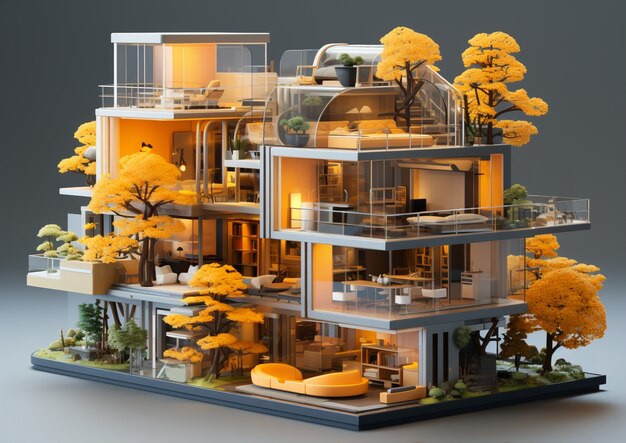
Sponsored article
The use of photorealistic 3D models is revolutionizing the architectural industry by providing architects with powerful tools to visualize and refine their designs. These models offer a new level of detail and realism, allowing architects to explore and present their ideas with unprecedented clarity and accuracy. This article delves into the transformative impact of photorealistic 3D modeling on architectural projects, highlighting its numerous benefits and guiding architects in leveraging this technology to enhance their workflows.
In the ever-evolving field of architecture, photorealistic 3D models are becoming indispensable tools for professionals seeking to enhance visualization and design accuracy. These models offer architects a powerful means to create detailed and immersive representations of their projects, enabling them to convey ideas more effectively to clients, stakeholders, and construction teams. Photorealistic 3D models play a crucial role in the architecture process by allowing for precise evaluations and realistic previews of architectural concepts. By employing these models, architects can visualize intricate design elements and materials within a virtual environment, ensuring that the final output aligns with their creative vision and functional requirements.
As architects strive to meet the increasing demand for precision and professionalism, the utilization of 3D building models for architects provides several key benefits:
For those looking to explore and utilize these innovative tools, resources such as 3D building models for architects can significantly aid in fostering creativity, precision, and successful project outcomes.
Integrating 3D modeling technology into architectural design offers numerous benefits, significantly transforming the way architects conceptualize and communicate their projects. One of the key advantages is increased efficiency; with 3D modeling technology, designers can quickly create detailed and accurate models of their projects, reducing the time spent on revisions and allowing for more iterative design processes. This technology streamlines collaboration among team members, providing a precise framework to work from, which leads to swifter decision-making and resource optimization.
Another notable benefit is the improvement in client presentations. 3D modeling technology enables architects to present their ideas with photorealistic visualizations, making complex architectural designs understandable and engaging for clients. This not only helps in conveying the vision more effectively but also allows clients to visualise the final outcome accurately, resulting in enhanced project outcomes. These compelling renderings ensure clients are more informed and satisfied, minimizing misunderstandings and fostering trust.
Choosing the right 3D modeling tools for architectural projects is crucial for turning innovative designs into vivid, photorealistic 3D models. When considering software selection, architects should evaluate key features such as ease of use, rendering quality, and the ability to create intricate details that bring a project to life. High-quality 3D modeling tools should offer intuitive interfaces and powerful engines to efficiently handle complex geometries and large file sizes. Beyond basic modeling capabilities, these tools need to support advanced rendering techniques and photorealistic visualizations to ensure the final output aligns closely with the envisioned aesthetics of the architectural projects.
Compatibility with existing workflows is another critical factor in software selection, influencing collaboration and productivity. It’s essential to choose tools that integrate seamlessly with CAD programs, BIM software, and other design platforms commonly used in architectural projects. This compatibility ensures a streamlined process—from conceptual design through to final presentation—and enhances coordination among diverse teams. Selecting the appropriate 3D modeling tools not only accelerates project timelines but also significantly impacts the success and quality of architectural endeavors.